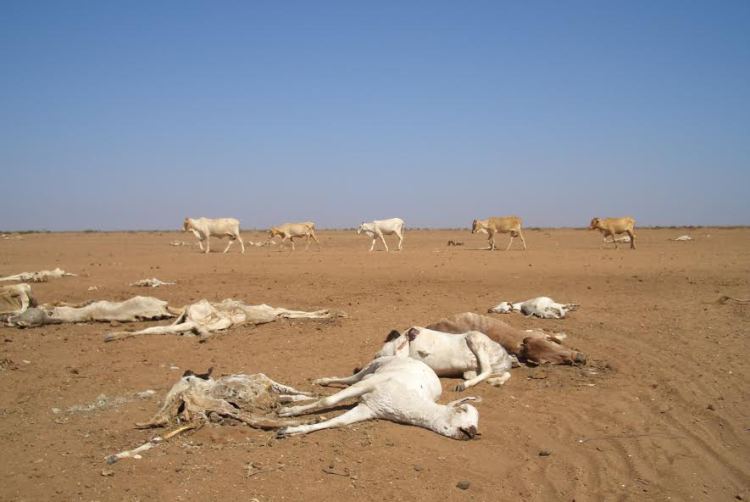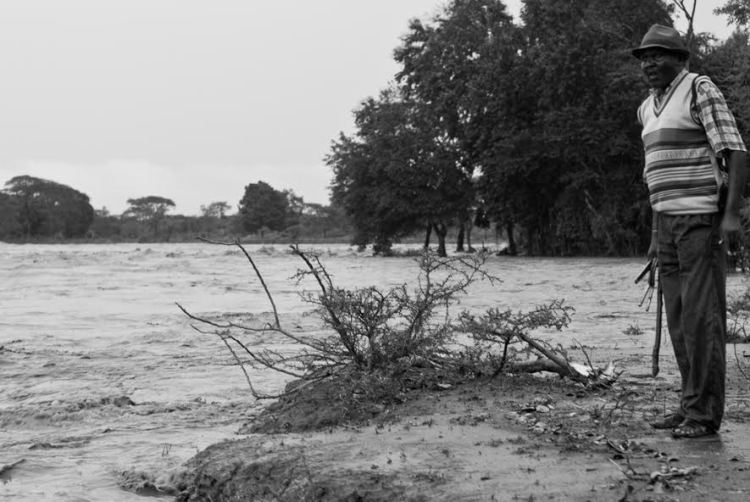In this piece, Sitati Asha reflects on how closely the fight against Ebola in West Africa mirrors the fight against Climate Change in Kenya
That the world has been awakened by the Ebola crisis in the West Africa. News all over of the world has been fixated on the intensity of the crisis even as new cases are being identified in the DRC and Senegal. The World Health Organization calls it a ‘global public health emergency’, and The World Bank recently pledged $ 200 million dollars to help contain the crisis. But isn’t this the case of too little too late?
As the world continues to grapple with the Ebola outbreak, we are reminded that post-crisis response is not always the best route to take after all. Most African countries are highly dependent on external resources for funding. In Liberia, for instance, the Ministry of Health and Sanitation received 8.2% of the total Government budget in 2011 which is way below the target of 15% of total government allocation as per the Abuja Declaration. Even with the looming crisis, these countries do not have enough medical practitioners to attend to the victims of Ebola.
The right to health is a human right. Article 12 of the International Covenant on Economic, Social and Cultural rights, clearly recognizes the right to “the enjoyment of the highest attainable standard of physical and mental health”. Article 12.2 requires parties to take specific steps to improve the health of their citizens. The right to health encompasses access to timely and appropriate health care. Governments, therefore, need to prioritize health care as a way of achieving sustainable development.
In the same vein, climate change is a reality that can never be wished away. The 5th Assessment report of the Intergovernmental Panel on Climate Change (IPCC) clearly points out that the global surface temperature will continue to rise to 1.5oC by the end of the 21st Century. There is also anticipated increase in the rise of sea level, warming of the oceans, carbon-dioxide production and change in the global water cycle. All these scenarios point to an increase in impacts of climate change.
Africa, for instance, is one of the worst disaster-hit continents yet it has insufficient capacity to deal with the climate-related disasters like floods, droughts, landslides, and wild-fires. Governments have the responsibility to reduce the impact of climate change on its citizens by proactively working towards reducing the risk and addressing the root-causes of climate change.
What is Kenya doing?
In 1994, Kenya joined the international community in combating climate change by ratifying the UNFCCC. Kenya is also one of the first African countries to have developed government plans that would respond to climate change. The commitment was further shown through the launch of an elaborate National Climate Change Response Strategy (NCCRS) in 2010 which would ensure that robust measures to combat climate change were put in place. The strategy’s backbone rested on the fact that climate change is a threat to Kenya’s sustainable development, the Vision 2030, the Millennium Development Goals (MDGs) and other national and International commitments. Hence, there was the need to have climate change information integrated into national policy.
In 2013, the government of Kenya, through the Ministry of Environment and Natural Resources, launched the National Climate Change Action Plan (NCCAP) whose overarching aim was to operationalize the NCCRS. There are also a number of uncoordinated projects and programmes that are related to climate change adaptation and mitigation and are being implemented by different actors-public, private and civil societies.
But despite all the efforts seen so far, climate change has remained one of the major challenges that the Kenya government is yet to deal with. Most of the country’s ecosystems have been put under pressure and intensively fragmented. Vulnerable populations across the country continue to face the impacts of climate change in terms of frequent climate-related extreme events and disruption of socio-economic systems. Kenya’s vulnerability to climate change is further worsened by inadequate information and technological infrastructure, low institutional capacity and relatively poor resource management.
The changes in rainfall trends have been associated with the risks of flood in the western part of the country. But the Arid and Semi-Arid Lands have been severely affected by drought and the livelihood patterns changed. In the North, nomadic pastoralists are now trying their luck on farming yet the soils are barren. Finding fertile pasture for their livestock has been equated to ‘getting water from a stone’.
Vulnerable communities in the coastal region have not been spared either. The impact of climate change is well revealed through rising sea levels that have inundated the agricultural land and caused increased salinity. The coastal populace mostly depends on fishing as a source of livelihood-for income and food-yet over-reliance on the same would mean depleting the fish stocks.
The agricultural sector-major source of revenue for the country-is one of the most affected due to its climate-sensitivity. Most of the agricultural activities in Kenya are rain-fed; hence the climate extreme events pose a challenge to farmers in terms of sustaining yield amidst climatic uncertainties. For instance, the perennial floods in Budalang’i area in the Western region of the country (the major food basket) have greatly hampered agricultural activities and distorted livelihoods. Food security issues in the vulnerable areas continue to be witnessed.
The NCCAP strongly advocates for livelihood diversification and adoption of technologies in agriculture, like irrigation and use of crop varieties (fast-maturing and drought resistant crops). The adaptation and mitigation measures have also been extensively highlighted. But of what use are the measures if no much climate change action is seen to be taking place? The government needs to go an extra mile and provide an enabling environment for instilling best practices among citizens, especially the vulnerable communities. More emphasis should be put in creating awareness in a way that would relate with the needs of target groups/sectors in terms of content and media.
There is significant effort to create awareness on matters related to climate change but the Kenya government needs to ‘lead from the front’.
The problem with politicians in Kenya is that they are too self-centered, and remain blind to the very thing that threatens their own political future and that of their employers (electorates). If all politicians decided to put climate change on the top of their agenda, then Kenya would be on the map as one of the leading countries in the world that is taking action to combat climate change. The stability of the Kenyan economy is highly dependent on the climate as the main sectors -agriculture and tourism- are extremely climate-sensitive.
The political will needs to be manifested in various policies and institutions through mainstreaming climate change in all sectors and county-specific programmes. Climate change should be on the lips and minds of, not only the policy makers, but also all actors-business fraternity, civil societies and the general public. To achieve vision 2030, Kenya has to respond to the call of combating climate change by all means possible! The ability to deal with climate change and associated impacts in Kenya depends on functional systems, strong political will and an empowered citizenry!
This piece was originally published here.
Format: Aside

